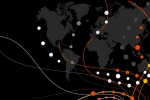Luxembourg: The hidden gem of Europe
Luxembourg is home to Europe’s largest reinsurance market but over the years with several new compliance rules, the trend of consolidation and now the COVID-19 pandemic, can Luxembourg continue to stay on top?
With a population of over 626,000 people, Luxembourg is a small landlocked country located in Western Europe. It is a polyglot nation with Luxembourgish, French and German as its official language.
For a small country, Luxembourg has been a founding member of the EU, Organisation for Economic Co-operation and Development (OECD), United Nations, North Atlantic Treaty Organization (NATO), and Benelux.
Its capital, Luxembourg City, is one of the four official capitals of the EU along with Brussels, Frankfurt, and Strasbourg. It also holds the seat of the Court of Justice of the EU, which is the highest judicial authority in the EU.
Luxembourg is also internationally known for reinsurance and as a captive reinsurance domicile. It has a fully diversified financial centre and is the largest captive reinsurance domicile in the EU.
Companies from around the globe have domiciled almost 200 reinsurance vehicles in Luxembourg, 90 percent of which are captives, choosing it for a variety of reasons.

These include its stable democracy and strong economy situated in the heart of Europe, its economic, social and political stability, which ensure a secure legal and tax framework, as well as a skilled multilingual workforce, and a modern legal and regulatory framework for captive reinsurance companies.
The regulator for Luxembourg is known as the Commissariat aux Assurances (CAA). As a member of the EU, Luxembourg adopts all EU regulation but the country generally does not add on any of their regulation on top of this.
Matt Moran, deputy advisory leader at PwC Luxembourg and head of insurance, says the Luxembourg captive market is “unique given its focus on international insurance activities and the fact that it has, in the CAA, a dedicated regulator specifically for the insurance sector”.
Moran explains that it is one of only three countries in the EU today with a separate competent authority for the sector. “Luxembourg has a separate regulator which covers other financial services including banking and asset management.”
Geraud de Borman, partner at PwC Luxembourg, highlights that the appeal of the Luxembourg captive system was mainly due to the pioneering role played by the Luxembourg Government lawmakers in Europe.

He states that they anticipated the 2005 European directive on reinsurance (2005/68/EC) by establishing a prudential framework as far as back as 1991.
This anticipation of the future European framework highlights the Luxembourg authorities’ experience and understanding of the advantage of insurance or reinsurance captive for groups, according to de Borman.
He says: “One clear illustration of that expertise was linked to the decision of using the concept of equalisation provision.”
“In addition to the large expertise of the Luxembourg regulator, together with the generic advantages of Luxembourg captive – such as a reduction in overall insurance costs, protection against insurance market volatility, better management and control of group risks and claims, optimised management of retention, direct access to the reinsurance market, first level of pooling at group level) – the equalisation provision regime is a key differentiator for Luxembourg,” de Borman adds.
When looking at the adoption of the Luxembourg law on reinsurance companies, the authorities in Luxembourg considered that the technical provisions as provided by the European insurance regulation at that time “were not sufficient to cover the concentration of the risk supported by the reinsurance companies and even more by the captive”, according to de Borman. He explains that the technical provisions covering the insurance companies were determined based on the concept of a mutualisation of the diversified range of risks between a large number of third parties policyholders whereas the reinsurance companies (and even more for captives) were based on mutualisation of a limited range of risks between a limited number of policyholders.
Equalisation provisions can be defined as technical provisions intended to cover exceptional or significant claims which might occur, or reserves set aside in compliance with legal or administrative requirements to equalise fluctuations in loss ratios in future years or to provide for special risks.
De Borman adds: “It aims to equalise claims fluctuations for future years and to cover special risks though the claims fluctuations provisions. De Borman adds: The possibility for a reinsurance company to book equalisation provisions is specifically provided for by 2005/68/EC, the reinsurance directive, and the commercial charge linked to equalisation provisions is tax-deductible.”
As a member of the EU, Luxembourg has to comply with Solvency II rules, which is a directive introducing practical requirements tailored to the specific risks which each insurer bears. They promote transparency, comparability and competitiveness in the insurance sector and therefore harmonise the EU insurance regulation.
Claude Weber, managing director at Marsh Captive Solutions Luxembourg, explains that there has been a significant increase in compliance rules in the last years in addition to Solvency II.
Weber suggests that this has resulted in additional costs for captive owners and managers.
He adds: “Accordingly, the entry costs for newcomers have increased and more reporting and compliance tasks are required for existing captives.”
This has led to fewer captives with higher gross premiums remaining, and they are writing more specific risks than in the past, such as employee benefits, cyber, and financial loss policies, Weber says.
Because of the low rates for traditional lines of business, such as property damage/business interruption and casualty, captives have been used less to cover these risks over the last decade, however, Weber adds that today, captives more than often provide coverage for non-traditional risks, that the insurance market was reluctant to accept or only offered at too high a cost.
He highlights that while this reduction of premium rates has had a negative impact on the number of captives, “the current transitioning insurance market has generated a new interest in the formation of captives, holding higher retention rates, and adding additional coverages”.
“This trend may be enhanced by the global changes related to the COVID-19 pandemic,” he adds.
Market trends
Over the past three years, Luxembourg has seen an interest from many groups to incorporate/re-incorporate their captives. De Borman explains that this is happening because Luxembourg is a key location in the EU, and companies can benefit from the various benefits outlined above.
Looking at other trends within the country’s captive market, Weber argues that due to its central position within Europe, having “reactive and effective control of the regulator” and having a good reputation within the captive industry has led to more than 10 Brexit companies having set-up their EU head offices in Luxembourg.
He outlines the international tax situation, Brexit, and Solvency II has had serious impacts on the substance requirement for captives, which has then affected the professional management, stability, and security of the captives based in the country. But adds that the captive’s underwriting activities have adapted to the market changes.
He explains: “Over the last few years, the levels of retention have substantially increased due to the pressure of the insurance markets for higher deductibles. This is even more important now with the increase in pricing and the reduction of capacity in the market.”
“This trend, combined with the larger parent groups and the worldwide use of the captives, has driven a constant increase in the size of the captives,” Weber adds.

Challenges
Looking at challenges for the captive insurance market in Luxembourg, Anthony Dault, audit and advisory partner at PwC Luxembourg, believes that the cost burden associated with new regulations is one of the challenges that captives face given that they are relatively small in size. “Although,” Dault continues, “the Luxembourg captive industry has processed the Solvency II impact very well and efficiently already, without any compromise on compliance from the Regulator and players in Luxembourg.”
Also weighing in, Weber outlines what he believes the number of new compliance rules, international tax reporting standards, information obligations, and other reporting requirements are the key challenges for captive management professionals. Even though captive managers have implemented several IT solutions to simplify and render secure all this new reporting, Weber says with shorter reporting deadlines every year, more time and training is required to explain and implement all these new regulations.
Staying competitive
Luxembourg is the largest captive reinsurance domicile in the EU but the figures have dropped over the years from nearly 250 reinsurance domiciled in the country in 2012 down to 196 in 2019.
Dault explains there are several reasons for this. He notes that some foreign groups had acquired several captives in Luxembourg and decided to merge several of their vehicles which results in the optimum scale and efficiency.
Some others, especially smaller entities, exited the market where their insurance need is expected to remain low and hence would not justify the cost to maintain the company. Also, the attractiveness of a captive can be influenced by general insurance rates, according to Dault.
Moran suggests that another reason could be the trend of consolidation that the world is currently seeing. He explains: “What you see here is a smaller number of captives but much larger in size. What you have now is people creating an international risk centre in Luxembourg using captives as a core element.”
According to Moran, PwC has been involved in several transactions by helping companies to consolidate and enlarge their captive, which he explains reduces the number of absolute captive entities.
Weber suggests that other countries have also implemented measures to attract captives to their home country.
He says: “For example, Sweden has offered the possibility to set up substantial catastrophe reserves for direct writing and reinsurance captives. Luxembourg does not allow an equalisation reserve for direct writers. Also, France is currently offering the same in combination with strict tax controls for companies operating a captive outside of the country.”
What does the future hold?
Like most countries right now, a lot has been put on hold due to the current COVID-19 pandemic.
The Prime Minister of Luxembourg Xavier Bettel declared a state of emergency on 19 March after the country had 335 cases and four deaths.
Looking at how COVID-19 will affect the Luxembourg market, de Borman suggests that some groups will use their captives to cover business interruption risk and within that, the pandemic risk will be included in their captive.
He states that this is why a group would have decided to go to Luxembourg as they can benefit from equalisation provision to also benefit from reinsurance or regulatory capacity of the captives to cover the exceptional risk.
Analysing the future for captive insurance, Weber points out that for many years, the traditional lines of insurance were soft with low rates on the line.
He highlights: “A number of captive owners used to arbitrate transferring these risks to the insurance market instead of using their own captives with the goal of minimising their total cost of risk.”
“These last quarters, the market situation has changed – some insurers are imposing higher rates on line and reducing capacity substantially - especially for corporations facing significant historical claims over the past few years, but also for companies with excellent claims statistics,” he continues.
Weber believes looking at these developments, there are trends for captives to bear more risks for the traditional lines, but also to write new lines of business. Also, numerous projects are going on for new captive formations. Adding that this trend should continue in the coming months.
He notes: “We know that COVID-19 will be an exceptional risk but it is clear that captives, as in business interruption risk, would be impacted by the pandemic.”
Source: http://www.captiveinsurancetimes.com/countryfocus/country.php?country_id=166








